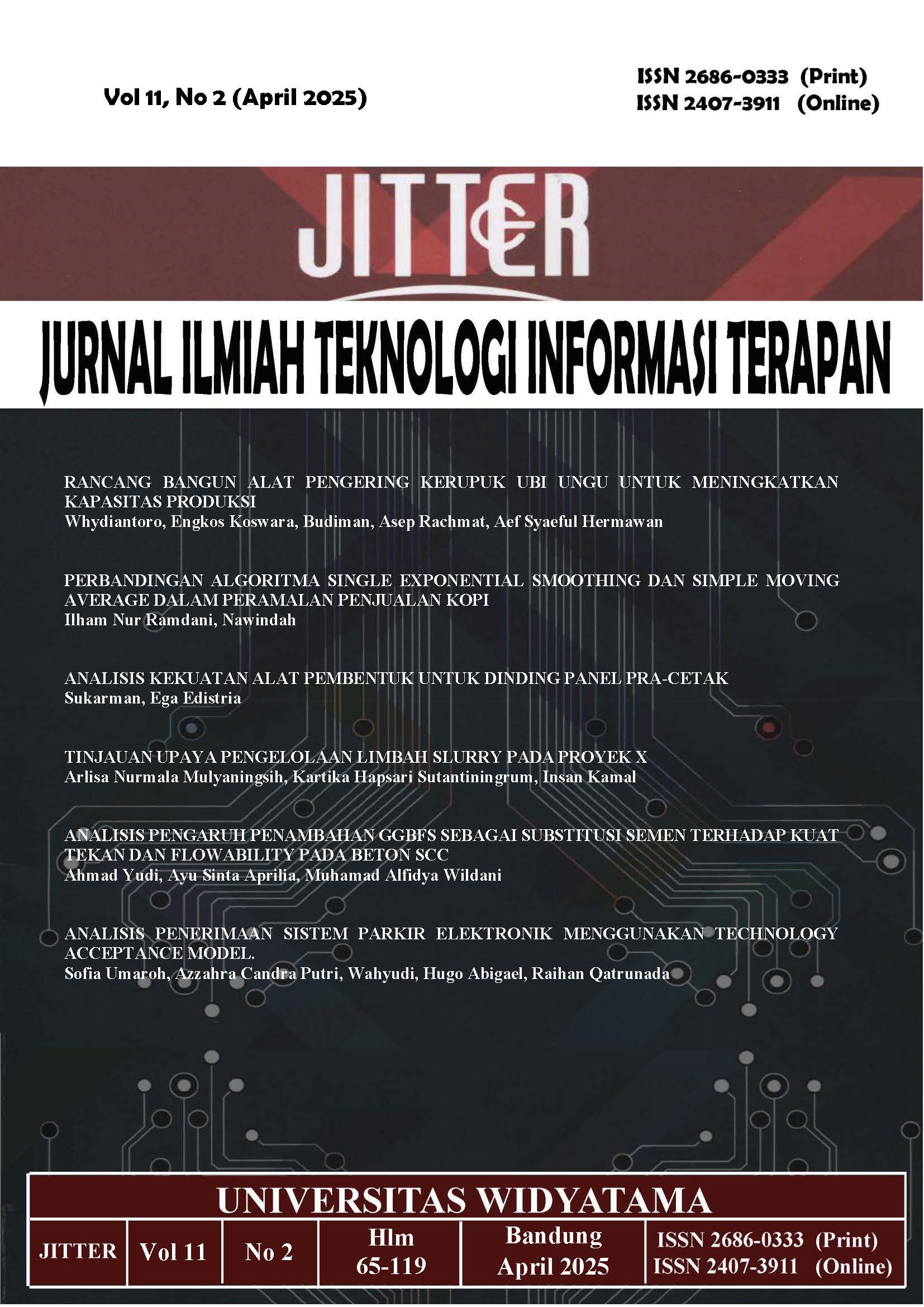Comparison of Single Exponential Smoothing and Simple Moving Average Algorithms in Sales Coffee Forecasting
DOI:
https://doi.org/10.33197/jitter.vol11.iss2.2025.2431Abstract
Increasingly fierce competition, operational management, especially raw material management, has become a major challenge for many businesses. Therefore, companies or businesses that want to achieve maximum profits need a good and accurate sales prediction strategy for the coming period. Good predictions not only help in anticipating market needs, but also optimize inventory management to minimize the risk of losses due to excess or shortage of stock. The use of good forecasting algorithms is the main key so that companies can analyze historical data in depth to identify relevant patterns and trends so that they can improve operational efficiency. This research aims to compare two forecasting algorithm methods, namely Exponential Smoothing and Moving Average, in determining which method is superior in terms of sales prediction accuracy. The data used in this research comes from historical sales of Kopi Cucu Eyang Coffee Shop. Performance evaluation of the two algorithms was carried out using three main metrics, Mean Absolute Deviation (MAD), Mean Squared Error (MSE), and Mean Absolute Percentage Error (MAPE). The research results show that the Moving Average method is superior in MAPE accuracy with an average of 23%. On the other hand, Single Exponential Smoothing shows superiority in balancing MAD and MSE in certain products. It is hoped that this research can provide useful recommendations to improve inventory management efficiency and support better business decision making.
Downloads
Downloads
Published
How to Cite
Issue
Section
License
Copyright (c) 2025 Ilham Nur Ramdani, Nawindah

This work is licensed under a Creative Commons Attribution-NonCommercial-ShareAlike 4.0 International License.
Submission of a manuscript implies that the submitted work has not been published before (except as part of a thesis or report, or abstract); that it is not under consideration for publication elsewhere; that its publication has been approved by all co-authors. If and when the manuscript is accepted for publication, the author(s) still hold the copyright and retain publishing rights without restrictions. Authors or others are allowed to multiply the article as long as not for commercial purposes. For the new invention, authors are suggested to manage its patent before published. The license type is CC-BY-SA 4.0.




.png)
.png)













.png)


